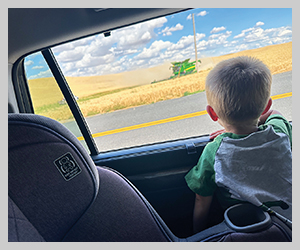Updates to the Whole Farm Revenue program
2023February 2023
By Curtis Evanenko
McGregor Risk Management Services

Greetings and happy new year everyone!
My objective is to provide an update on the recently announced modifications to the Whole Farm Revenue Protection policy by the Risk Management Agency (RMA) that are effective for the 2023 crop year. A previous article on this subject matter in the August 2020 edition of Wheat Life gave a foundation of the Whole Farm Revenue Protection policy.
First, let’s review the changes announced in August by RMA pertaining to Whole Farm Revenue Protection:
- Increased the maximum insurable revenue for Whole Farm Revenue Protection from $8.5 million to $17 million, allowing more producers to participate in the program.
- Adjusted yield reporting requirements at the sales closing date to streamline record keeping and reduce overall paperwork.
- Replaced existing expense reporting procedures with a 40% reduction in the expected revenue for commodities which cannot be planted due to insurable causes.
- Increase the maximum approved revenue for the Micro Farm program from $100,000 to $350,000, allowing more participation from local food producers.
For commodities not insured under another policy by the Federal Crop Insurance Corporation, the insured’s acreage, production and revenue history must be reported on the yield and revenue report. The yield and revenue report must be submitted on or before the sales closing date for commodities reported on the intended farm operation report.
The process for reporting commodities intended to be planted, but not planted due to insurable cause, are submitted on the revised farm operating report, now using 60% of the intended revenue for that commodity.
Let’s summarize the current Whole Farm Revenue Protection policy:
- $17 million liability limit.
- Protects the farm operation against the loss of revenue earned or expected from commodities produced during the insurance period or bought for resale during the insurance period.
- Available in all counties in all 50 states.
- Coverage level of 50% to 85% in 5% increments.
- Expanding operations can increase average allowable historic revenue by up to 35% if approved by the approved insurance provider.
- Operations with two or more commodities meeting diversifications requirements are eligible for premium subsidy.
- Requires five most recently filed Schedule F forms (2017-21) for the coming 2023 crop year.
- A replant payment is available for annual commodities if there is no replant provision provided with a Multi-Peril Crop Insurance policy.
The Micro Farm Program is relatively new, introduced by RMA last year. The focus of this policy is to meet the needs of smaller operations typical of farm-to-market producers. The increase in the maximum revenue will automatically increase eligible producers and corresponding goal of increasing program participation.
 Washington state leads the nation in active Whole Farm Revenue policies, accounting for 40% with a corresponding liability of 36%. This has been true since the introduction of the policy, and I believe it will continue to be the primary coverage for specialty crops such as tree fruit, grapes, potatoes, onions, etc.
Washington state leads the nation in active Whole Farm Revenue policies, accounting for 40% with a corresponding liability of 36%. This has been true since the introduction of the policy, and I believe it will continue to be the primary coverage for specialty crops such as tree fruit, grapes, potatoes, onions, etc.
The strength of the revenue protection policy for the primary crops grown in Eastern Washington — barley, canola, dry peas and wheat — negates the need for dryland producers to seek a “better coverage policy,” in my opinion. In our experience with the Whole Farm Revenue Policy, the coverage provided did not surpass the coverage afforded by a well-designed revenue protection policy for the producer.
As stated previously regarding Whole Farm Revenue Protection, it is not a one-size-fits-all policy. If you’re growing nontraditional crops, this policy may fit you like a glove, and the recent enhancements are very favorable for additional program participation.
I wish you the best for the coming growing season!
Curtis Evanenko serves as a risk management advisor with McGregor Risk Management Services. He can be reached at (509) 540-2632 or by email at cevanenko@mcgregorrisk.com.












